Lespedeza (Lespedeza cuneata) — sometimes referred to as “Sericea Lespedeza” — is popping up all over recently. If you’re not familiar with it, there are a couple things you’ll want to know. First, there are several species of lespedeza. I don’t believe I’ve ever seen any of these other non-invasive species, but it’s good to be aware of them. The native Lespedeza virginica — commonly called slender bush clover — has showy pinkish lavender flowers in mid-summer. No such attractive flowers appear on the invasive Lespedeza, which has barely noticeable and utterly forgettable tiny whitish flowers. There are two other non-invasive species, Lespedeza capitata (roundhead lespedeza) and L. hirta (hairy lespedeza), which have creamy flowers similar to the invasive lespedeza, but in denser clusters.
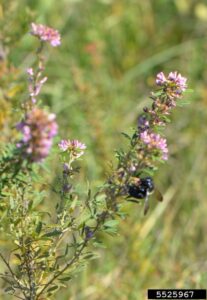
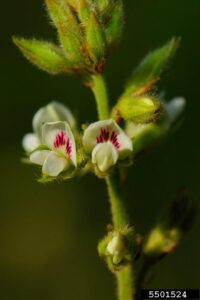
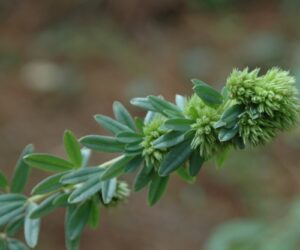
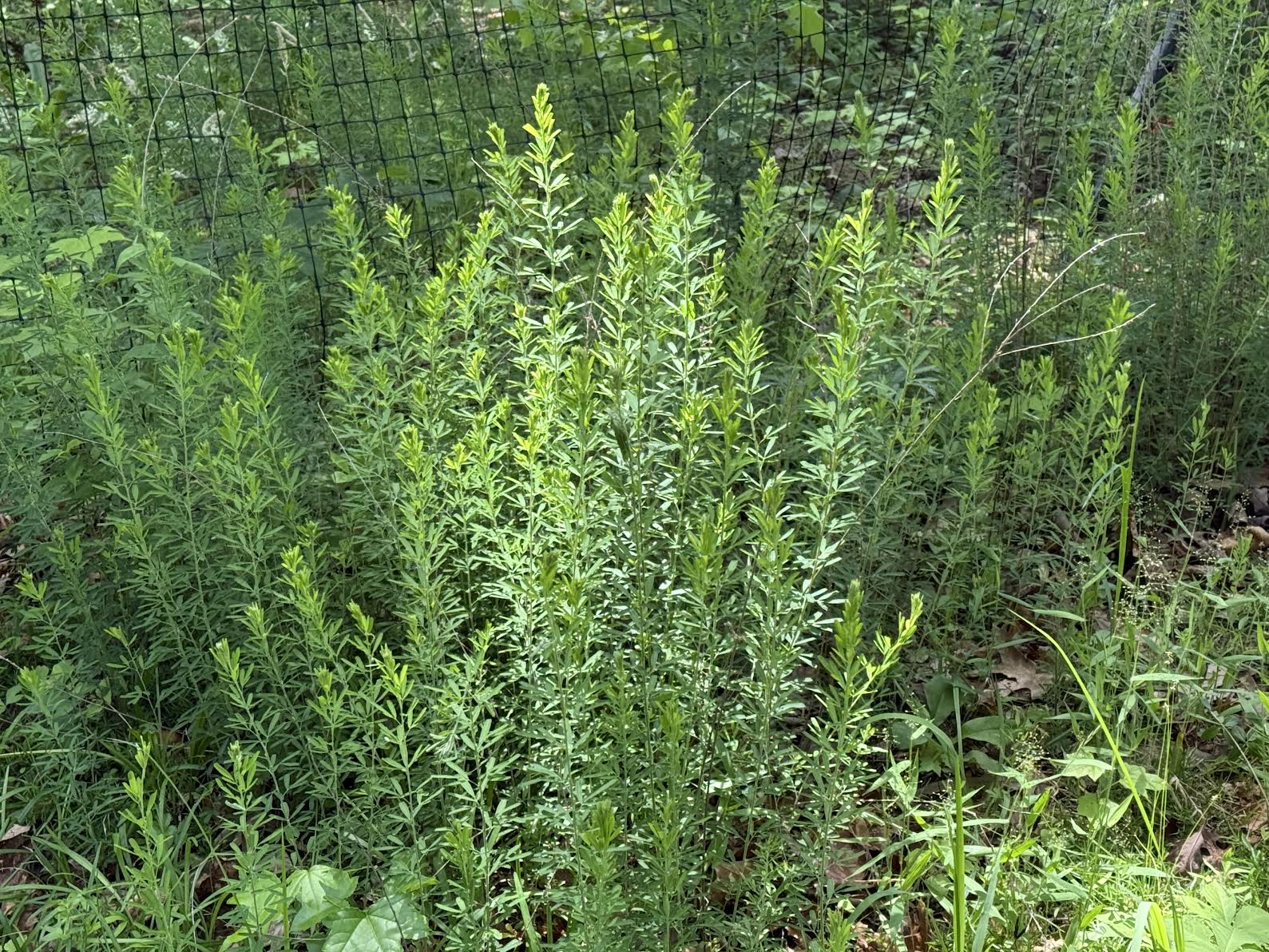
Invasive Lespedeza — pictured directly above — may be allelopathic, meaning that some research indicates that it produces chemicals that hinder the growth of other plants. According to the NC State Extension, it “forms extensive monocultures and develops an extensive seed bank in the soil, ensuring its long residence at a site. Its high tannin content makes it unpalatable to livestock and most native wildlife.” NC State Ext.
How to Control Invasive Lespedeza
Mechanical Methods: Because of its deep taproot, hand-pulling lespedeza is rarely effective unless the soil is moist and the plant is young. Mowing can be somewhat effective if you’re willing to do it in a two-step process. First, you mow (or string-trim) when spring growth is about 12 inches tall. “At this stage, the root system is most vulnerable, so it rebounds weakly.” Blue Ridge PRISM Fact Sheet. But you’ll have to mow again when flowering begins on that weak rebounder or spot treat it with herbicide.
Herbicide Spray: According to the experts at Blue Ridge PRISM, “the shape of lespedeza’s stems requires a special spraying technique. Spot spray individual plants by setting the spray nozzle to a narrow stream and spraying downward above each stem from top to bottom to avoid hitting nearby desirable plants.” Blue Ridge PRISM Fact Sheet. Herbicides are effective throughout the growing season, but it’s best to do this before flowering begins.
Other Invasives to Control this Month
Autumn olive can be controlled in summer by either the cut-stump method, or, if stems are large, the hack-and-squirt method. Preventing seed production is critical, so killing or cutting back autumn olive by mid-July (before seeds ripen) is essential. You’ll have to watch for re-sprouts; cut and treat new stems or apply a foliar herbicide spray to new foliage. Foliar sprays can be used from spring through fall but may need a second application. This is a very difficult plant to eradicate. See the PRISM Fact Sheet for more detail, and for guidance on these two control methods, see Blue Ridge PRISM/ Control Methods.
Mile-A-Minute Vine (Persicaria perfoliata) begins to flower in June with clusters of tiny, white flowers, followed by green fruits that ripen to bright blue. The plant flowers and fruits continually from early summer until frost. Both manual pulling and herbicide treatments should be done before seed setting in mid- to late-June.
Multiflora Rose (Rosa multiflora) flowers in May and June, followed by small, hard, green fruits (rosehips) in mid-summer. It is best to control this invasive before the rosehips ripen to red in fall. Several control methods are usually necessary over several years. Pulling individual plants from the soil works only if all roots are removed. You can mow or weed-whack the shrubs (using a brush cutter, not a string trimmer) and apply a foliar spray to the regrowth. You can also use the cut-stump method on the shrub with an immediate application of herbicide to the cut.
Tree of Heaven (Ailanthus altissima) can be treated with the hack-and-squirt stump method, which is best done from June 1 to October 1.
A Meeting You Won’t Want to Miss
If you’ve been hoping to rally your neighbors around fighting the invasive plants blighting your neighborhood, but wondering how to go about it, have I got a meeting for you! How Neighborhood Associations Can Address Invasive Plants. That’s the topic of the Summer Quarterly Meeting of the Blue Ridge PRISM. Reserve your spot now for Wednesday, July 16 · 11:30 am – 1:00 pm, online.
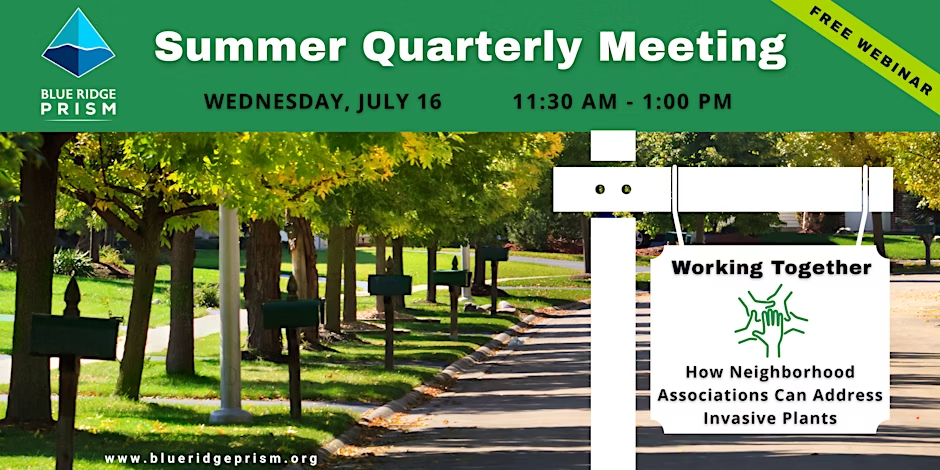
Featured photo: Cathy Caldwell
SOURCES:
North Carolina State Extension, “Lespedeza cuneata,” NC State Ext.
Blue Ridge PRISM (Blue Ridge Partnership for Regional Invasive Species Management)